This post may contain affiliate links. Please read our disclosure policy. As an Amazon Associate, I earn from qualifying purchases.
You don’t have to dine out to enjoy incredible pork yakisoba! Our Pork Yakisoba recipe is a classic Japanese stir-fry dish that is made with tender noodles, an assortment of vegetables, and flavorful pork (plus, BACON!). It’s a fantastic noodle dish that’s so surprisingly easy to make. In fact, we’re certain you’ll come back to this yakisoba recipe again and again!
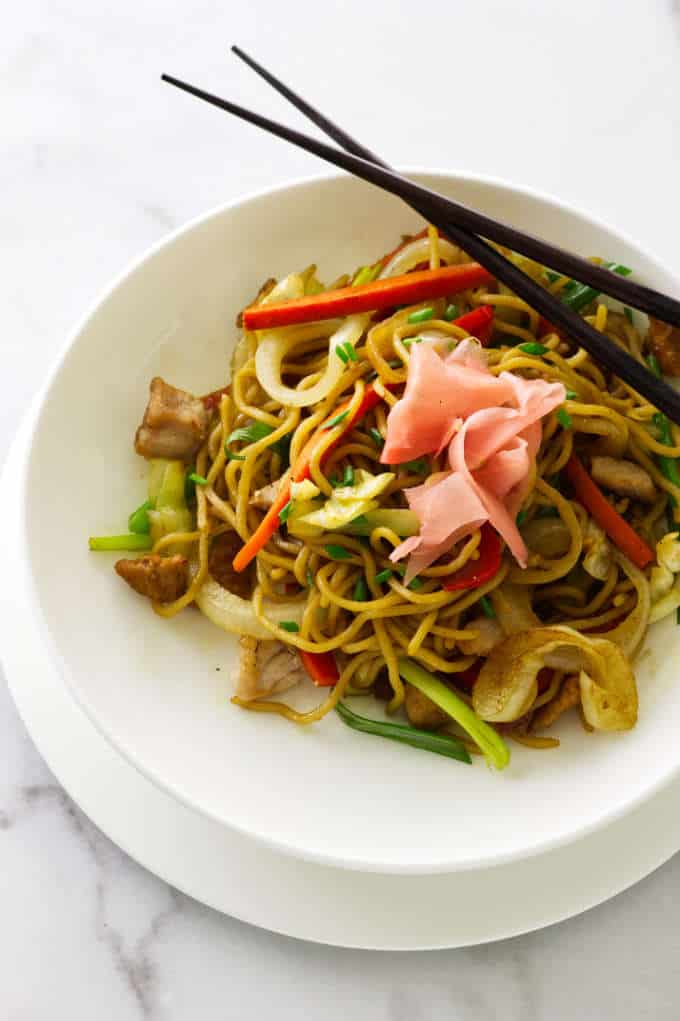
what is yakisoba?
Yakisoba (pronounced Yaa-key-sow-buh), also called Japanese Fried Noodles, is made by stir-frying noodles with meat and vegetables.
The “secret” ingredient to this popular Japanese street food (and what gives yakisoba its delicious, unique flavor) is a Japanese-style Worcestershire sauce that is quite simple to make! You can find different versions of yakisoba all across Asia, along with many restaurants in the U.S.
If you love this dish, try our shrimp yakisoba!
how to make it
Our pork yakisoba recipe includes a homemade sauce that calls for easy-to-source ingredients you might already have in your cabinets! It has a sweet, tangy flavor that we can’t get enough of.
ingredient list
To make the sauce, you will need:
- Worcestershire sauce
- oyster sauce
- ketchup
- honey
- sake (optional)
- white pepper
- toasted sesame oil
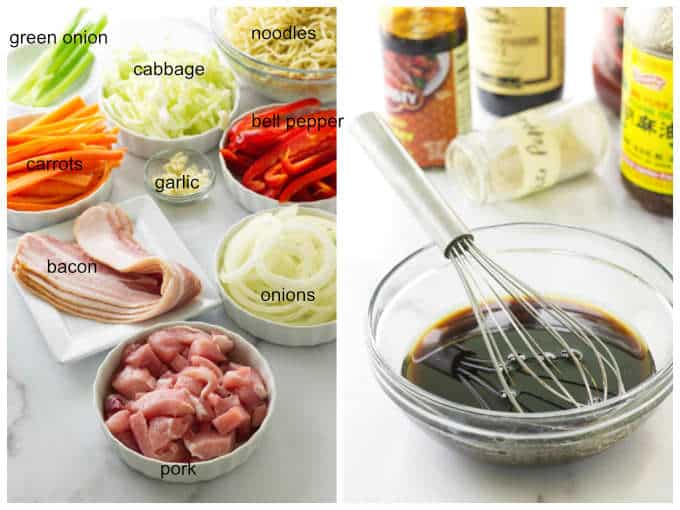
And for the Yakisoba, you will need to gather the following ingredients:
- Yakisoba noodles
- bacon, cut into 1/4-inch pieces
- pork, cut into small pieces
- onion, sliced
- minced or grated garlic
- cabbage, sliced
- thin strips of carrot
- red bell pepper, thinly sliced
- scallions, sliced lengthwise
- pickled ginger and snipped chives (for garnish)
The sauce for this recipe is different than our sauce for fried rice. It is more complex and unique to Yakisoba. You can also use our stir fry sauce recipe.
the process
This pork yakisoba recipe is a three-step process. We summarize it here but you can find all the details, including ingredient amounts, at the bottom of the page in the recipe card. Be sure to check it out!
- Cook the noodles: Boil the noodles according to the instructions on the package. Drain and rinse with cold water and dry them with paper towels. Return them to the pot and toss them with oil.
- Make the sauce: In a small dish, whisk together all of the sauce ingredients and set it aside.
- Make the Yakisoba: Cook the bacon bits, frying until it begins to crisp. Add the pork and cook 1-2 minutes. Toss in the onions, garlic, cabbage, carrots and red bell pepper. Add the noodles and sauce and toss
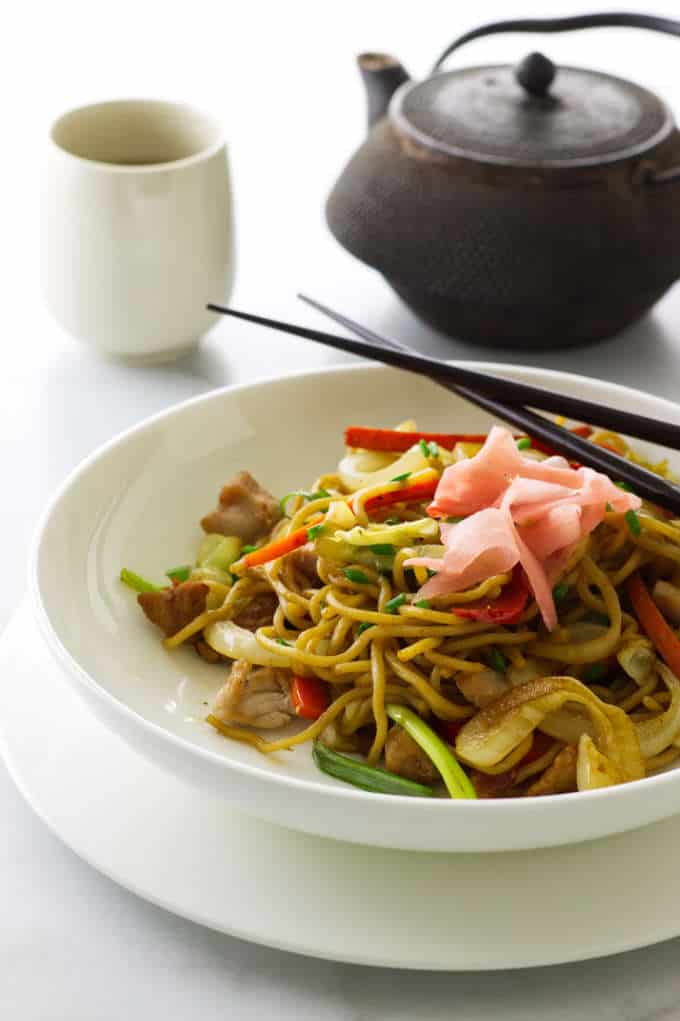
What is the difference between Yakisoba and Chow Mein?
Yakisoba and chow mein are similar– both are stir-fried noodles with vegetables and (often) a type of meat. The biggest difference is in the sauce used as well as the way the noodles are prepared. Yakisoba is Japanese fried noodles that are served soft, while chow mein is a Chinese dish made with wheat noodles that are cooked until crisp or nearly crisp.
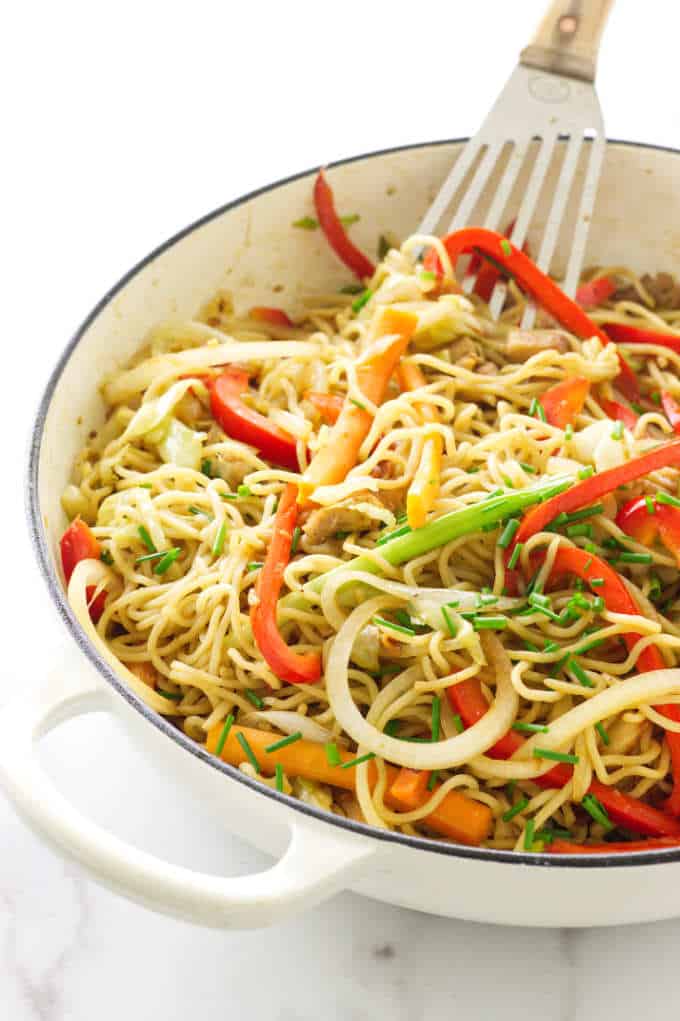
why you will love this yakisoba recipe
This dish comes together so quickly and is perfect for busy weeknights! You can even make the sauce ahead of time and keep it in the fridge to cut down the prep time. We love the combination of the veggies and noodles covered in that zesty sauce, plus the bacon and pork add a whole new flavor factor!
We’re sure the whole family will love this classic, Japanese-inspired meal!
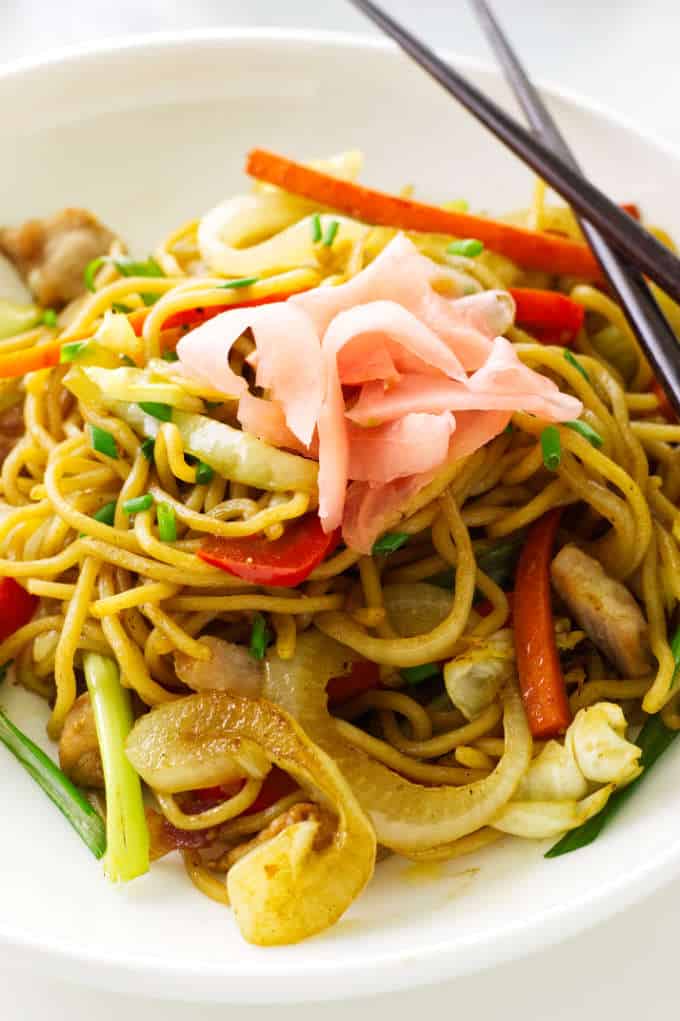
SOME OTHER RECIPES WE ARE SURE YOU WILL LOVE:
- Buckwheat Noodle Salad with Shrimp: A chilled buckwheat noodle salad with shrimp, morel mushrooms and sweet green peas. The creamy miso-tahini vinaigrette has a complexity that balances all the flavors.
- Ahi Tuna Poké Bowl: Fresh, sushi-grade tuna cut into cubes and lightly marinated in a zesty sauce. Served with sushi rice, avocado cubes and sweet-tangy pickled ginger. Yum!
- Pork Fried Rice: A delicious mix of pork, rice, eggs and vegetables with sesame oil and soy sauce for an Asian taste. This is a fast and easy recipe that works well for lunch or dinner.
Pin this now to find it later!
Pin It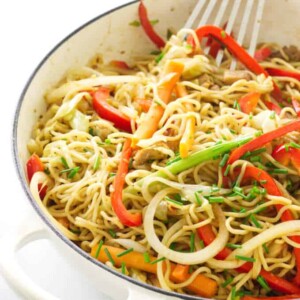
Pork Yakisoba
If you make this recipe, please leave a star rating and comment.
Ingredients
- 16 ounces yakisoba noodles
For the Sauce:
- 3 tablespoons Worcestershire sauce
- 1 tablespoon oyster sauce
- 2 tablespoon ketchup
- 1 tablespoon honey
- 2 tablespoons sake, optional
- ¼ teaspoon ground white pepper
- 2 tablespoon toasted sesame oil
For the Yakisoba:
- 3 slices thick-cut bacon, cut into 1/4 inch pieces
- 4 ounces boneless pork chops, cut into small pieces
- 1 onion, sliced
- 2 garlic cloves, grated or minced
- 2 cups cabbage, shredded
- 1 large carrots, cut into thin strips
- ½ red bell pepper, thinly sliced
- 3 scallions, sliced lengthwise
- Pickled ginger
Instructions
Cook the Noodles:
- Boil the noodles according to package instructions, drain and rinse with cold water. Spread the noodles on a double thickness of paper towels and blot with a handful of paper towels. Return the noodles to the cooking pot and toss with oil. Cover with lid and reserve.
Make the Sauce:
- In a small dish, whisk together the Worcestershire sauce, oyster sauce, ketchup, honey, sake (if using) and white pepper. Set aside.
Stir-Fry the Yakisoba:
- In a large heavy-bottomed fry pan set over medium heat add the bacon bits. Fry until the bacon begins to crisp, add the pork and cook 1-2 minutes.
- Add the onions, garlic, cabbage, carrots and red bell pepper and stir-fry until the vegetables begin to wilt.
- Give the pot of noodles a stir to loosen them up and add them to the vegetables.
- Drizzle the sauce over the noodles and toss with the vegetables until the noodles are heated and coated with the sauce.
- Divide equally into 4 serving dishes and garnish with the pickled ginger.
Notes
Nutrition
Nutrition information is automatically calculated, so should only be used as an approximation.
 Like this recipe? Rate & comment below!
Like this recipe? Rate & comment below!
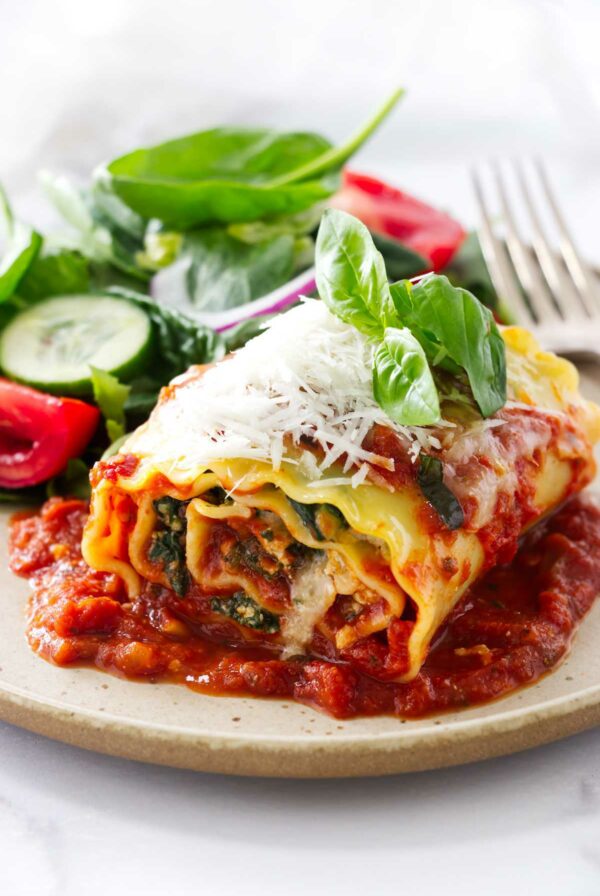
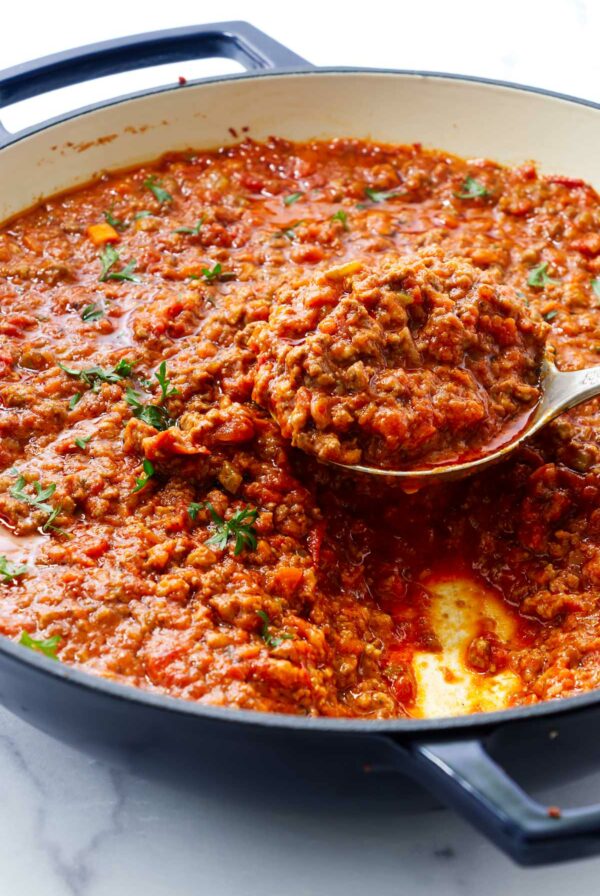
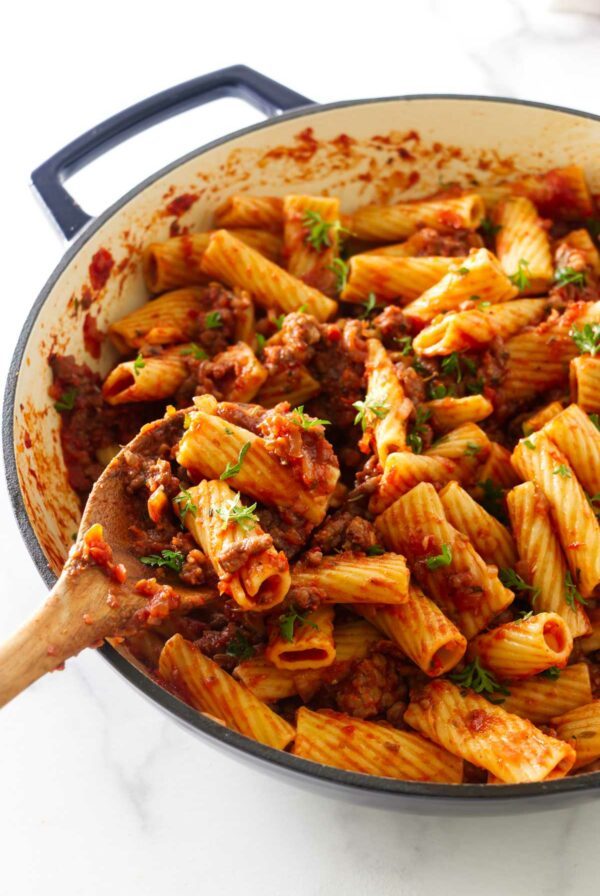
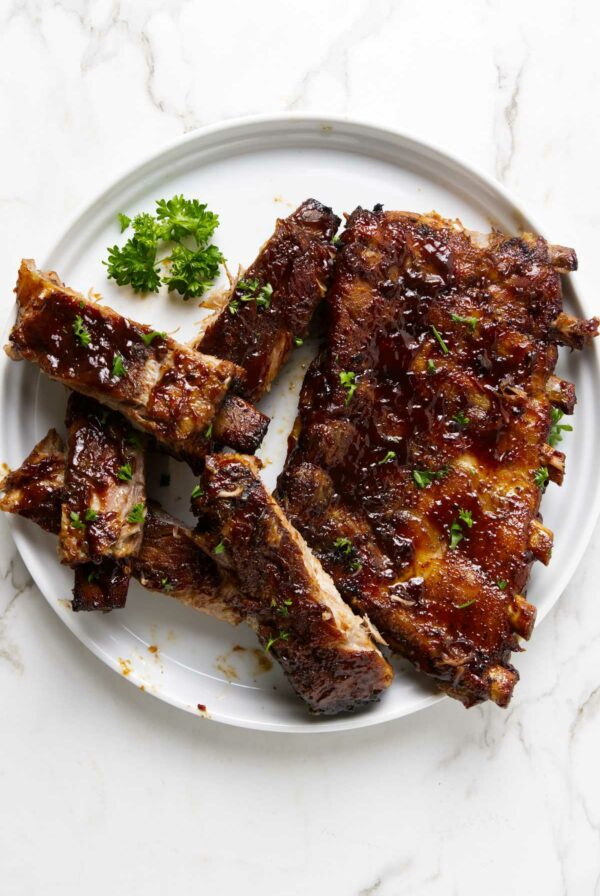










My mom and her senior citizen friends had visited Japan in 2018. And she got lot of noodles and sauces for my love for different cuisine. One of it was Yakisoba noodles. It was very tasty. Will definetly try your recipe.
Hi, Rahul….This is good stuff! Hope it meets your expectations. Thanks for your comments.
So colourful, delicious and it’s not even difficult to make! I love it.
Thank you, Angie!